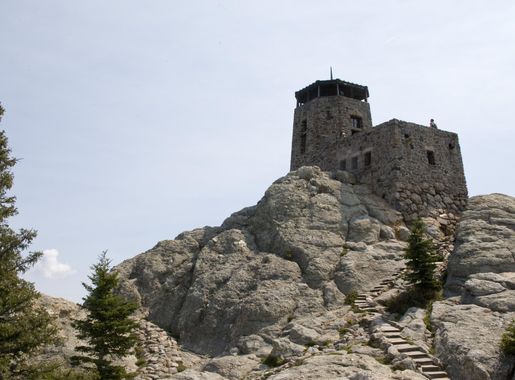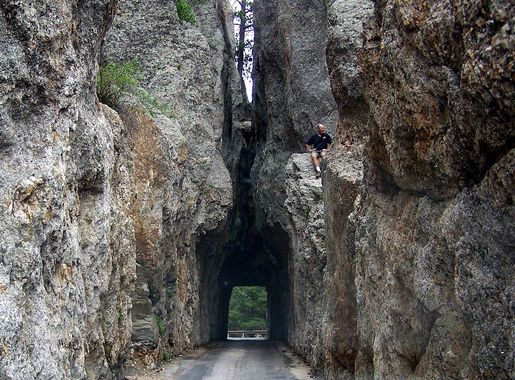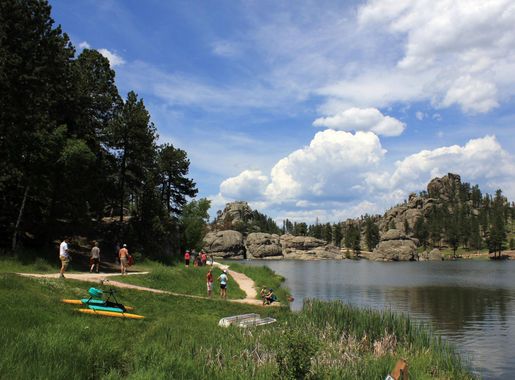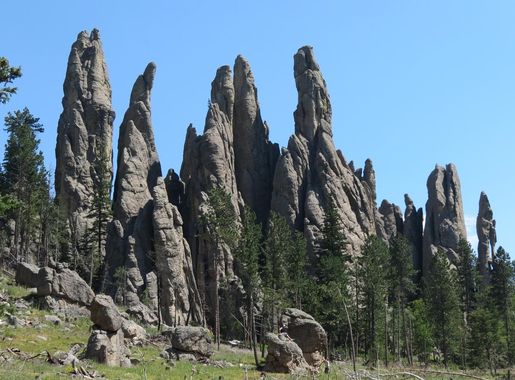
Majestic Heights: Black Elk Peak, South Dakota
Discover the highest point in South Dakota at Black Elk Peak, a sacred site with stunning views, rich history, and a serene hiking experience in the Black Hills.
Black Elk Peak, formerly known as Harney Peak, stands as the highest point east of the Rocky Mountains and west of the Pyrenees in Europe. Nestled in the Black Hills National Forest, this natural wonder rises to an elevation of 7,242 feet, offering breathtaking views and a sense of serenity that is unmatched. The peak is named in honor of Black Elk, a revered Oglala Lakota holy man, and holds deep cultural and spiritual significance for the Lakota people. Visitors to Black Elk Peak can enjoy a variety of outdoor activities. The most popular adventure is hiking the 7-mile round trip trail that leads to the summit. The trail is well-marked and offers a moderate challenge, making it accessible for most hikers. Along the way, you'll encounter lush forests, granite outcrops, and an array of wildlife. Once at the top, the panoramic views of the Black Hills and surrounding areas are simply awe-inspiring. The historic stone fire tower at the summit adds a unique touch to the experience. Built in the 1930s, it provides a vantage point for even more spectacular views. Whether you're an avid hiker, a nature lover, or someone seeking peace and reflection, Black Elk Peak is a destination that promises an unforgettable experience. Remember to respect the land and its significance to the Lakota people as you explore this beautiful peak.
Local tips in Black Elk Peak
- Start your hike early in the morning to avoid crowds and heat, especially during the summer months.
- Wear sturdy hiking boots and bring plenty of water and snacks, as the trail can be demanding.
- Check the weather forecast before your hike. Conditions can change quickly, and it’s best to be prepared.
- Respect the natural environment and cultural significance of the peak. Leave no trace and be mindful of wildlife.
- Consider visiting in the fall when the foliage adds a burst of color to the landscape.
Majestic Heights: Black Elk Peak, South Dakota
Black Elk Peak, formerly known as Harney Peak, stands as the highest point east of the Rocky Mountains and west of the Pyrenees in Europe. Nestled in the Black Hills National Forest, this natural wonder rises to an elevation of 7,242 feet, offering breathtaking views and a sense of serenity that is unmatched. The peak is named in honor of Black Elk, a revered Oglala Lakota holy man, and holds deep cultural and spiritual significance for the Lakota people. Visitors to Black Elk Peak can enjoy a variety of outdoor activities. The most popular adventure is hiking the 7-mile round trip trail that leads to the summit. The trail is well-marked and offers a moderate challenge, making it accessible for most hikers. Along the way, you'll encounter lush forests, granite outcrops, and an array of wildlife. Once at the top, the panoramic views of the Black Hills and surrounding areas are simply awe-inspiring. The historic stone fire tower at the summit adds a unique touch to the experience. Built in the 1930s, it provides a vantage point for even more spectacular views. Whether you're an avid hiker, a nature lover, or someone seeking peace and reflection, Black Elk Peak is a destination that promises an unforgettable experience. Remember to respect the land and its significance to the Lakota people as you explore this beautiful peak.
When is the best time to go to Black Elk Peak?
Unmissable attractions to see
Cosmos Mystery Area
Explore the Cosmos Mystery Area in Rapid City, SD, where gravity defies the norm and curiosity reigns supreme. A must-visit for all ages!
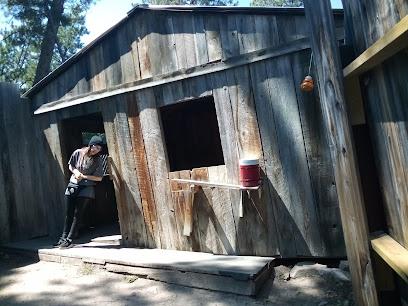
Needles Highway Scenic Overlook
Discover panoramic views and stunning natural beauty at Needles Highway Scenic Overlook in South Dakota, a must-visit for nature enthusiasts.
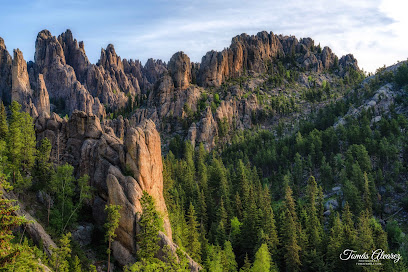
Old MacDonald's Farm
Experience family fun at Old MacDonald's Farm, a charming zoo and amusement park in Rapid City, SD, featuring friendly animals and exciting attractions.
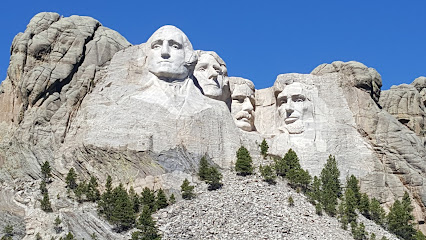
Needles Highway
Discover the breathtaking views and unique rock formations along Needles Highway in the Black Hills of South Dakota, a must-visit scenic drive.
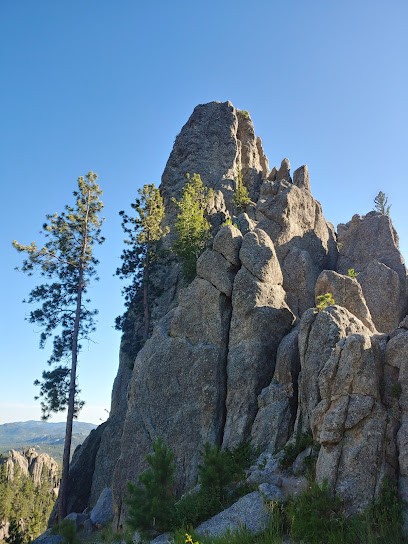
Doane Robinson Tunnel (Tunnel view of Mount Rushmore)
Experience the stunning views of Mount Rushmore from the historic Doane Robinson Tunnel, a unique perspective on this iconic American landmark.
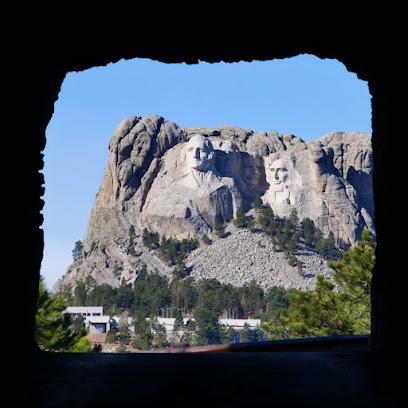
South Dakota State Railroad Museum, Ltd.
Explore the South Dakota State Railroad Museum: A Journey Through the History of Railroads and Their Impact on the Black Hills.
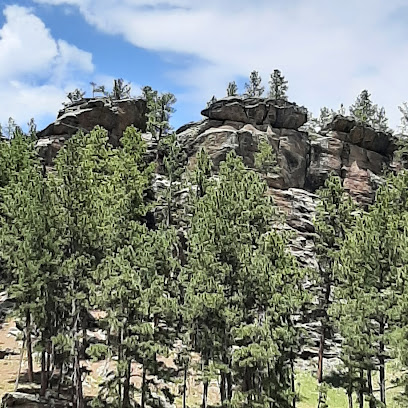
Custer State Park Wildlife Loop Road
Experience the breathtaking beauty and diverse wildlife of Custer State Park Wildlife Loop Road, a must-visit scenic drive in South Dakota.
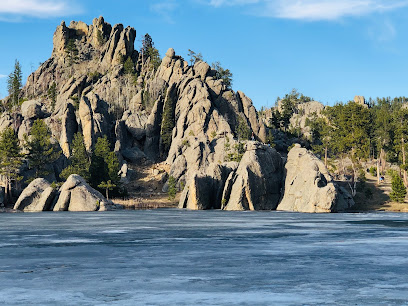
1881 Courthouse Museum
Explore the captivating history of Custer, South Dakota at the 1881 Courthouse Museum, where the past comes alive through fascinating exhibits.
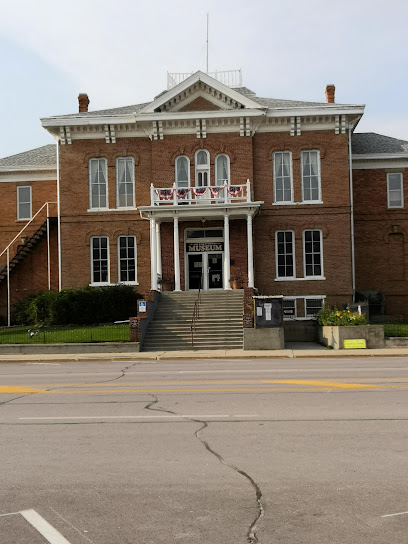
Black Hills Playhouse
Discover the enchanting Black Hills Playhouse, where the magic of theater meets the stunning beauty of South Dakota's Black Hills.
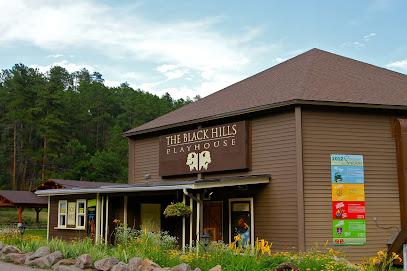
Harbach Centennial Park
Explore the serene beauty of Harbach Centennial Park in Custer, SD, a perfect blend of nature, adventure, and relaxation for every tourist.
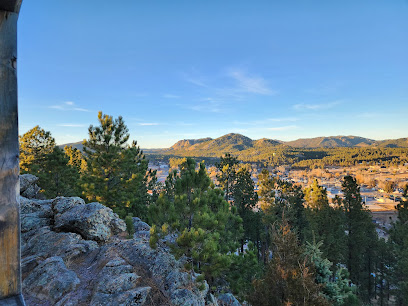
Gordon Stockade Historical Landmark
Discover the rich history and scenic beauty at Gordon Stockade Historical Landmark, a must-visit tourist attraction in Custer, South Dakota.
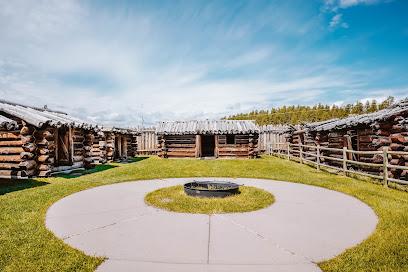
Rankin Ridge Trail
Experience the breathtaking views and tranquility of Rankin Ridge Trail in Custer, South Dakota, a must-visit for outdoor enthusiasts.
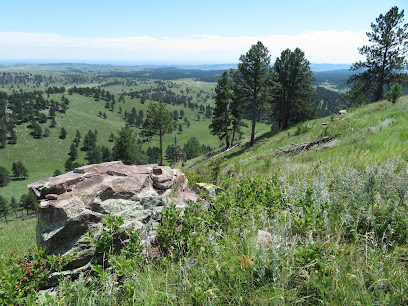
Horsethief Lake Loop Trailhead
Explore Horsethief Lake Loop Trailhead in South Dakota for breathtaking hikes, serene nature, and unforgettable outdoor experiences in the Black Hills.
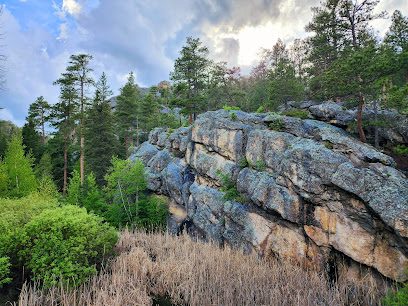
Sylvan Lake Shore Trailhead
Discover the breathtaking trails and picturesque views at Sylvan Lake Shore Trailhead, a haven for hikers and nature lovers in South Dakota.
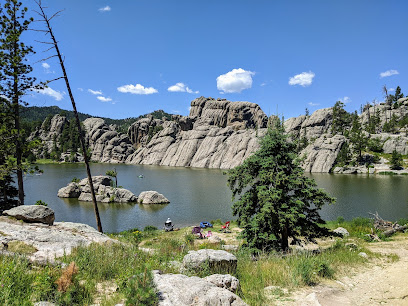
Palmer Creek Trailhead
Discover the breathtaking trails and serene landscapes at Palmer Creek Trailhead in the Black Hills of South Dakota, a hiker's paradise.
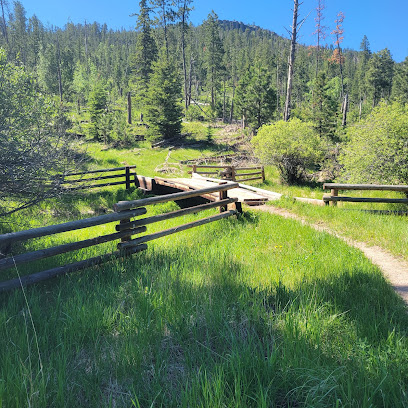
Essential places to dine
Alpine Inn
Discover the unique blend of comfort and culinary delight at Alpine Inn in Hill City, SD—your gateway to Black Hills adventures.
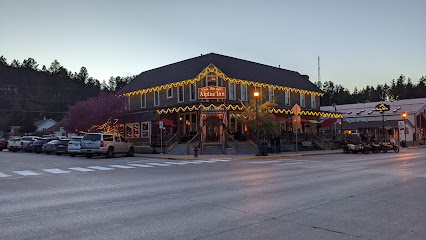
Black Hills Sauce & Dough
Discover delicious burgers and local flavors at Black Hills Sauce & Dough in Custer, SD - a must-visit restaurant during your travels.
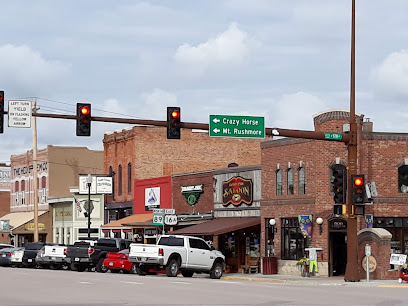
Buglin' Bull Restaurant and Sports Bar
Experience hearty American cuisine and thrilling sports action at Buglin' Bull Restaurant & Sports Bar in Custer - where flavor meets excitement.
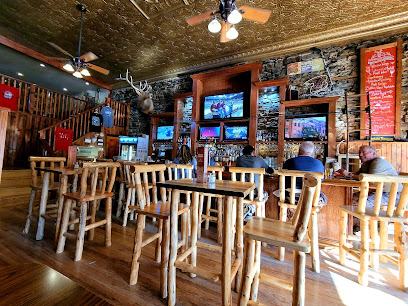
Powder House
Experience rustic charm at Powder House Lodge in Keystone - your gateway to adventure in South Dakota's stunning Black Hills.

Ruby House Restaurant
Discover Ruby House Restaurant in Keystone: A family-friendly American dining experience filled with delicious flavors and local charm.
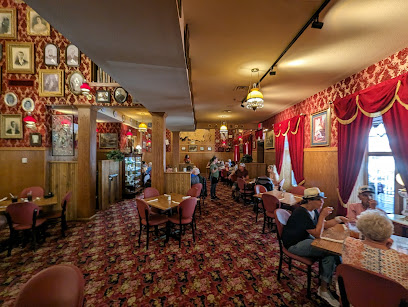
The Custer Wolf - Food & Drink
Experience the best of American cuisine at The Custer Wolf in scenic South Dakota - where flavor meets hospitality.
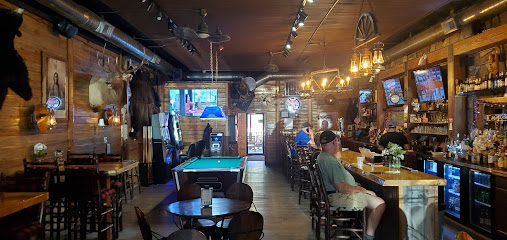
Begging Burro Mexican Bistro
Experience vibrant flavors at Begging Burro Mexican Bistro in Custer, SD – where every dish tells a story of authentic Mexican tradition.
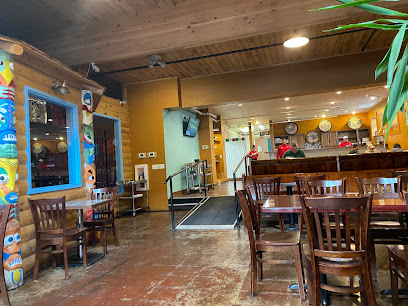
Cruizzers
Discover delicious pizzas at Cruizzers in Keystone, SD - where taste meets tradition amidst stunning Black Hills scenery.
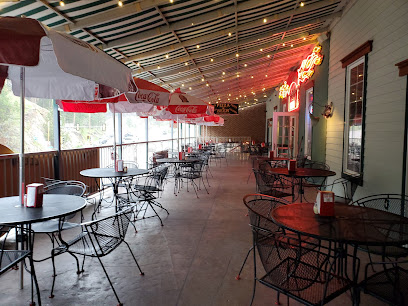
Skogen Kitchen
Discover the exquisite flavors of South Dakota at Skogen Kitchen - a must-visit restaurant in Custer for discerning palates.
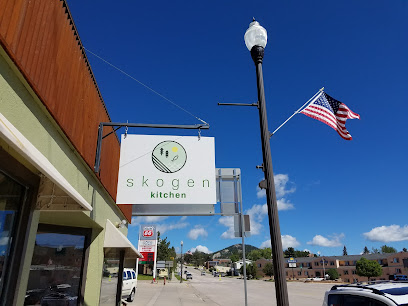
Sage Creek Grille - Now Open!
Experience the best of American cuisine at Sage Creek Grille in Custer, South Dakota – where local flavors meet warm hospitality.
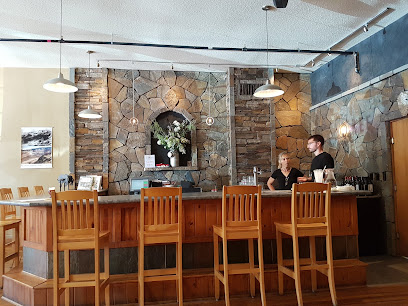
The Front Porch Restaurant and Bar
Discover delightful flavors at The Front Porch Restaurant and Bar in Keystone - where great food meets warm hospitality.

The Custer Beacon
Discover The Custer Beacon: A lively restaurant offering delicious food and live music in the heart of South Dakota's beautiful Custer.
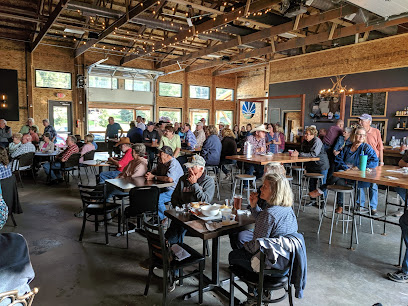
Carvers' Café
Experience hearty American cuisine in a stunning setting near Mount Rushmore National Memorial at Carvers' Café.
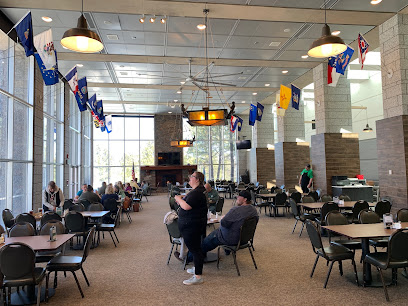
Captain's Table
Savor authentic local cuisine at Captain's Table in Custer, South Dakota - where every meal tells a story.

Jane's Boardwalk Pizza
Discover delicious pizza in Keystone at Jane's Boardwalk Pizza – where quality meets comfort in a beautiful setting.
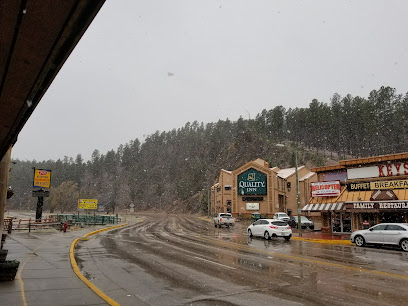
Markets, malls and hidden boutiques
Mount Rushmore Gift Shop
Explore the Mount Rushmore Gift Shop for unique souvenirs and local crafts celebrating this iconic American landmark.

Dave's Rock Shop
Explore the vibrant collection of gemstones and fossils at Dave's Rock Shop in Custer, South Dakota, a must-visit for nature lovers and souvenir seekers.
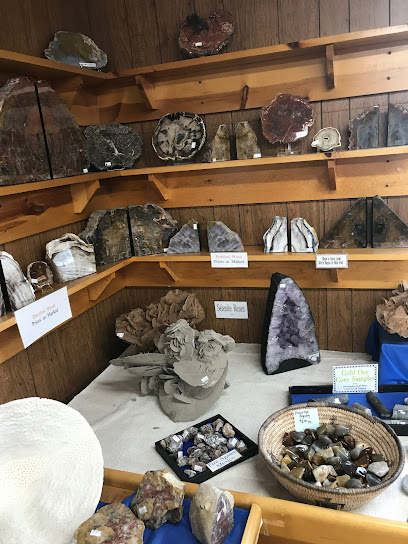
Ken's Minerals & Trading Post
Discover the beauty of Earth's geology at Ken's Minerals & Trading Post, a must-visit rock shop in Custer, South Dakota.
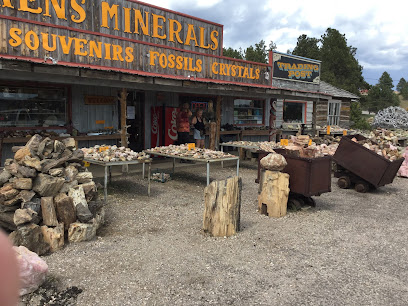
Dahl's Chainsaw Art
Explore the artistry of Dahl's Chainsaw Art in Keystone, SD, where unique wooden sculptures and memorable gifts await every visitor.
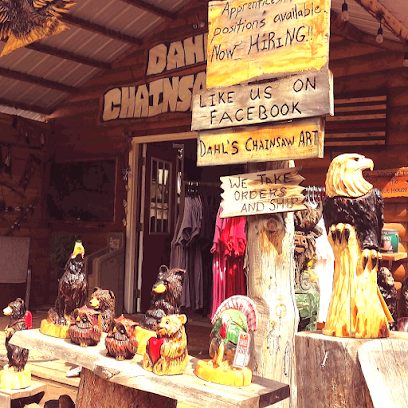
Coolidge General Store
Experience the charm of the American West at Coolidge General Store in Custer, South Dakota, your go-to destination for unique gifts and local treasures.
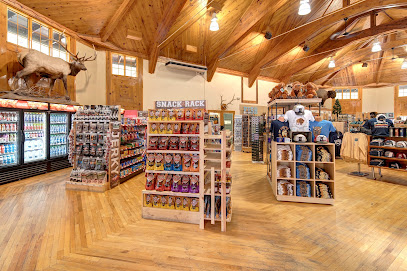
Sylvan Lake General Store & Eatery
Discover the Sylvan Lake General Store & Eatery, your one-stop destination for snacks, souvenirs, and canoe rentals in the heart of Custer, South Dakota.
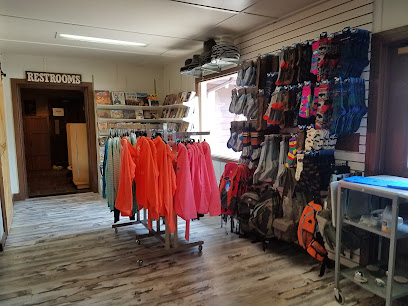
Halleys Store
Discover unique antiques and collectibles at Halley's Store in Keystone, South Dakota, a must-visit treasure trove for history enthusiasts.
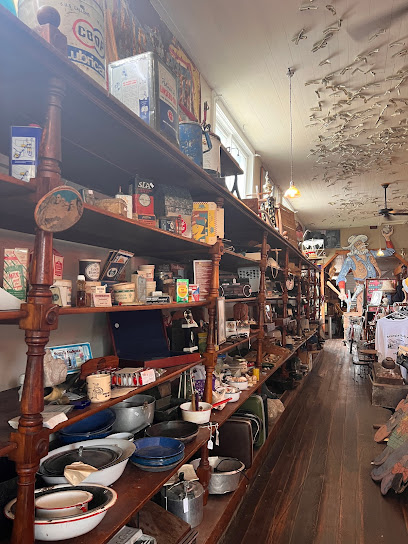
Wild Spruce Market
Explore the heart of Custer at Wild Spruce Market, your go-to spot for fresh groceries, organic delights, and a cozy coffee shop experience.

Holy Terror Antiques
Explore Holy Terror Antiques in Keystone, SD, for a unique blend of history and vintage charm, offering treasures for every antique lover.

The Indians
Discover unique gifts and local treasures at The Indians gift shop in Keystone, South Dakota, where every item tells a story.
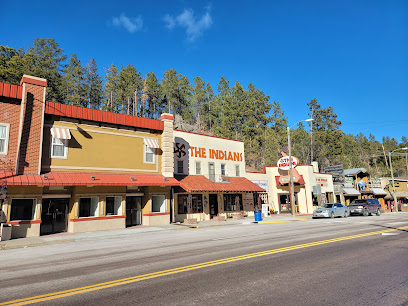
Rock Shop
Explore the enchanting Rock Shop in Custer, South Dakota, and discover unique rocks, minerals, and crystals that capture the beauty of nature.
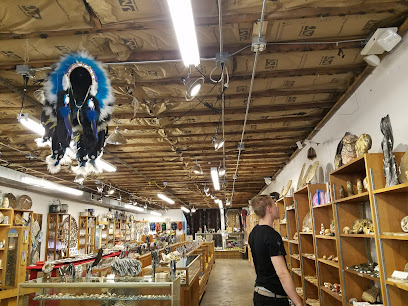
The Farmer's Daughter
Explore the vibrant world of quilting and local art at The Farmer's Daughter, a premier gift shop in Hill City, South Dakota.
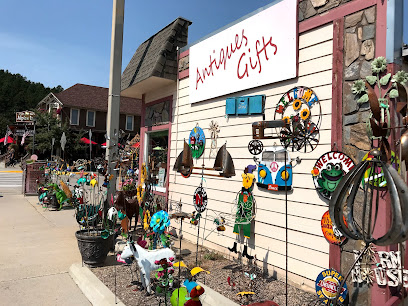
A Walk In the Woods Gallery & Gifts
Explore A Walk In the Woods Gallery & Gifts for unique treasures and local artistry that embody the spirit of Custer, South Dakota.
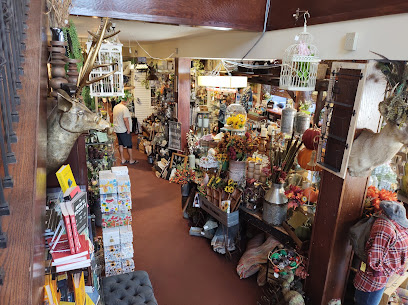
Dakota Territory Trading Post
Discover unique antiques and vintage treasures at Dakota Territory Trading Post in Custer, South Dakota, a must-visit for history lovers and collectors.

Custom Tee's
Discover unique apparel and souvenirs at Custom Tee's in Custer, South Dakota, where local artistry meets travel memories.
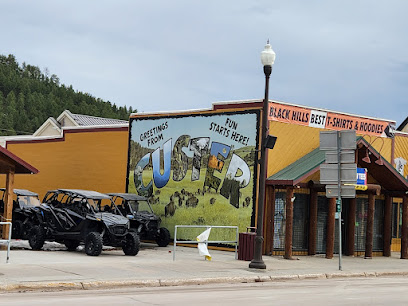
Essential bars & hidden hideouts
Buglin' Bull Restaurant and Sports Bar
Experience the heart of American cuisine and sports culture at Buglin' Bull Restaurant and Sports Bar in Custer, SD, perfect for families and food lovers alike.
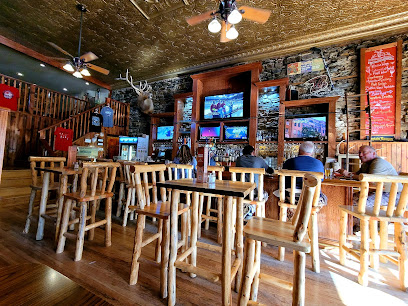
Powder House
Discover the taste of South Dakota at Powder House, where delicious steaks and a cozy atmosphere await every visitor.

Mt. Rushmore Brewing Company & Pounding Fathers Restaurant
Discover the flavors of South Dakota at Mt. Rushmore Brewing Company, where craft beer meets local cuisine in a warm and inviting atmosphere.
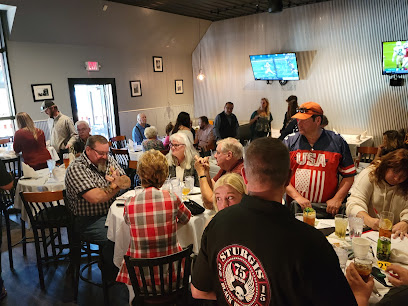
The Custer Wolf - Food & Drink
Experience the taste of classic American cuisine at The Custer Wolf, a beloved restaurant in the heart of Custer, South Dakota.
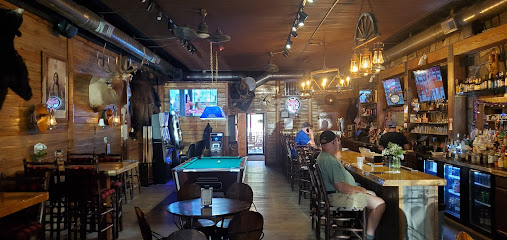
Bumpin Buffalo Bar and Grill
Explore the delicious offerings at Bumpin Buffalo Bar and Grill, a family-friendly restaurant in Hill City, SD, serving up grilled favorites and fine wines.
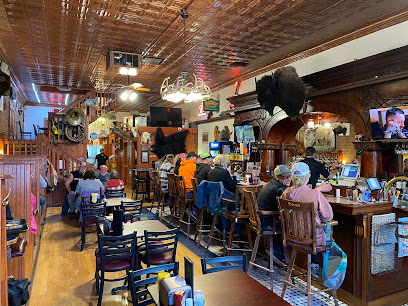
The Gaslight Dining Saloon
Experience the best of Rockerville dining at The Gaslight Saloon, where grill specialties and live music create unforgettable evenings.
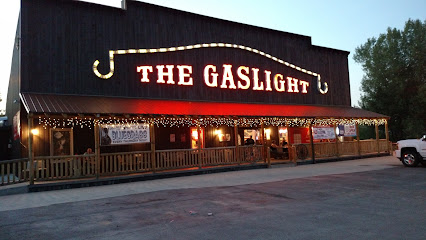
Calamity Jane Coffee Shop and Grill
Discover the charm of Calamity Jane Coffee Shop and Grill in Custer, SD - where quality coffee meets a delightful dining experience and unique souvenirs.
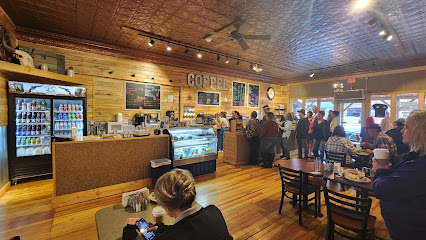
Red Garter Saloon
Discover the vibrant atmosphere and delicious cuisine of Red Garter Saloon, a must-visit bar and grill in Keystone, South Dakota.

The Custer Beacon
Experience the vibrant food, drinks, and live music at The Custer Beacon, where local flavors meet great entertainment in the heart of South Dakota.
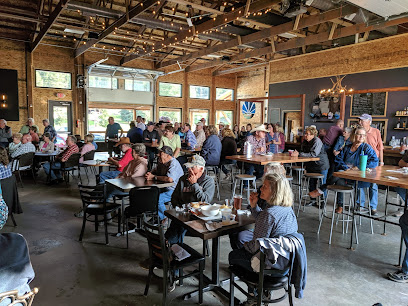
Halleys West
Discover delicious grilled delights at Halleys West in Keystone, South Dakota - a must-visit for every traveler exploring the Black Hills.
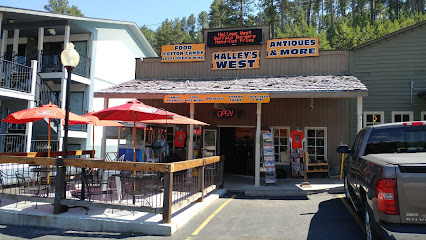
Grapes & Grinds
Discover Grapes & Grinds: a delightful coffee shop in Keystone, SD, blending local flavors, sweet treats, and a cozy atmosphere for all visitors.
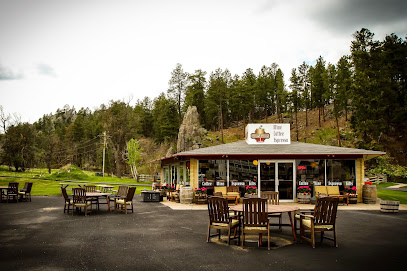
The Frontier Bar & Grill
Experience the vibrant flavors of American cuisine at The Frontier Bar & Grill, a family-friendly haven in Custer, South Dakota.
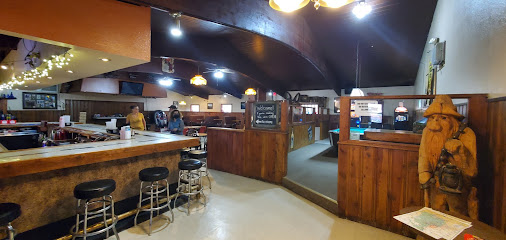
Moonshine Gulch Saloon
Discover the lively atmosphere and local flavors at Moonshine Gulch Saloon, your perfect stop in the scenic Black Hills of South Dakota.

Silver Dollar Saloon
Discover the rustic charm and vibrant atmosphere of the Silver Dollar Saloon, a top destination for relaxation and local flavor in Hill City, South Dakota.
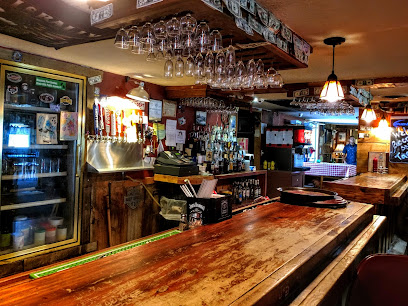
Gold Pan Saloon Custer
Experience the lively atmosphere and historic charm of Gold Pan Saloon, a must-visit bar in Custer, South Dakota, perfect for unwinding and socializing.

Local Phrases about Black Elk Peak
-
- HelloHau
[h-ow] - GoodbyeTokaheya
[to-kah-hay-ya] - YesHehan
[hay-hahn] - NoHinhanni
[heen-han-nee] - Please/You're welcomeWopila
[woh-pee-lah] - Thank youPilamaya
[pee-lah-mah-yah] - Excuse me/Sorryksapa
[ksah-pah] - How are you?Hehanyanpi
[hay-hahn-yahn-pee] - Fine. And you?Wan osni. Lila waste ki?
[wahn oh-shnee. lee-lah wah-steh kee?] - Do you speak English?Iyakapi he? English ota?
[eeyah-kah-pee hay? eeng-lish oh-tah?] - I don't understandWicayapi ksto
[wee-chah-yah-pee k-stoh]
- HelloHau
-
- I'd like to see the menu, pleaseMenu ksto wicayela yo
[meh-noo k-stoh wee-chah-yay-lah yoh] - I don't eat meatWamni kin hemaca
[wah-mnee keen hay-mah-chah] - Cheers!Skol!
[skohl] - I would like to pay, pleaseWicayela cekiya yo
[wee-chah-yay-lah chay-kee-yah yoh]
- I'd like to see the menu, pleaseMenu ksto wicayela yo
-
- Help!Waniyetu!
[wah-nee-yay-too] - Go away!Anpetu!
[ahn-pay-too] - Call the Police!Wicasa wakan yutapi!
[wee-chah-shah wah-kahn yoo-tah-pee] - Call a doctor!Wicahpi wakan yutapi!
[wee-chah-pee wah-kahn yoo-tah-pee] - I'm lostIkceka
[eek-chay-kah] - I'm illWaka ca
[wah-kah chah]
- Help!Waniyetu!
-
- I'd like to buy...Iyepi ksto kin
[ee-ye-pee k-stoh keen] - I'm just lookingWicayela opa
[wee-chah-yah-lah oh-pah] - How much is it?Tokel unsiyanke ki
[toh-kayl oon-shee-yahn-kay kee] - That's too expensiveEyapaha ki
[ay-yah-pah-hah kee] - Can you lower the price?Tokaheya aye ki
[toh-kah-hay-ya ah-yay kee]
- I'd like to buy...Iyepi ksto kin
-
- What time is it?Wicahpi eciyapi ki
[wee-chah-pee ay-chee-yah-pee kee] - It's one o'clockHecel ki
[hay-chayl kee] - Half past (10)Nahomni
[nah-hoh-mnee] - MorningWaniyetu
[wah-nee-yay-too] - AfternoonWiyukcan
[wee-yook-chahn] - EveningItonpaya
[ee-tohn-pah-yah] - YesterdayAnpetu woksape
[ahn-pay-too woh-k-shah-pay] - TodayLakota
[lah-koh-tah] - TomorrowZuya
[zoo-yah] - 1Hecel
[hay-chayl] - 2Numpa
[noom-pah] - 3Yamni
[yah-mnee] - 4Topa
[toh-pah] - 5Zaptan
[zahp-tahn] - 6Sakowin
[sah-koh-wee] - 7Sota
[soh-tah] - 8Sakpe
[sah-kpay] - 9Sakowinpi
[sah-koh-wee-pee] - 10Numpa cekiyapi
[noom-pah chay-kee-yah-pee]
- What time is it?Wicahpi eciyapi ki
-
- Where's a/the...?Hehanyanpi ki...
[hay-hahn-yahn-pee kee...] - What's the address?Heunkiksuyake ki
[hay-oon-keek-soo-yah-kay kee] - Can you show me (on the map)?Hehanyanpi ksto wawiyeya ki?
[hay-hahn-yahn-pee k-stoh wah-wee-yay-yah kee] - When's the next (bus)?Tanyan ohna ki
[tahn-yahn oh-nah kee] - A ticket (to ....)Wicayela peji ki (ki ....)
[wee-chah-yay-lah pay-jee kee (kee)]
- Where's a/the...?Hehanyanpi ki...
History of Black Elk Peak
-
Black Elk Peak, originally known as Hinhan Kaga (Making of Owls) by the Lakota Sioux, holds immense spiritual and cultural significance to various Native American tribes. The peak is named after the Oglala Lakota holy man, Black Elk, who experienced profound visions and spiritual revelations on the summit. These visions are detailed in the book 'Black Elk Speaks,' highlighting the peak's importance as a sacred site for prayer and reflection.
-
European explorers first documented Black Elk Peak in the mid-19th century. On August 15, 1857, Lieutenant G.K. Warren led an expedition that took note of the peak, although it was then known as Harney Peak, named after General William S. Harney. This period marked the beginning of increased European-American interest and intrusion into the Black Hills region, setting the stage for future conflicts and treaties with Native American tribes.
-
The discovery of gold in the Black Hills in 1874 by the Custer Expedition led to a massive influx of miners and settlers, dramatically altering the landscape and its use. Although the Treaty of Fort Laramie (1868) had guaranteed the Black Hills to the Lakota Sioux, the gold rush led to the U.S. government seizing the area, culminating in the Great Sioux War of 1876-77. This conflict further entrenched the peak's role in the contentious history of land ownership and resource exploitation in the region.
-
Established in 1912, Custer State Park surrounds Black Elk Peak and encompasses some of the most scenic landscapes in the Black Hills. The creation of the park aimed to preserve the natural beauty and wildlife of the area, including the peak, which became a focal point for conservation efforts. This period marked a shift from exploitation to preservation, reflecting broader changes in American attitudes towards natural landscapes.
-
In 1938, the Civilian Conservation Corps (CCC) constructed a stone fire lookout tower on the summit of Black Elk Peak. The tower, which still stands today, was part of a broader New Deal initiative to provide jobs during the Great Depression while enhancing public lands. The lookout tower offers panoramic views of the Black Hills and remains a popular destination for hikers and history enthusiasts.
-
In 2016, the U.S. Board on Geographic Names officially renamed Harney Peak to Black Elk Peak in honor of the revered Oglala Lakota holy man. The name change was advocated by Native American groups and supporters who sought to recognize the cultural and spiritual significance of the peak to the Lakota people. This event marked a significant step in acknowledging and respecting Native American heritage and history in the region.
Black Elk Peak Essentials
-
Black Elk Peak is located in the Black Hills National Forest in South Dakota. The nearest major airport is Rapid City Regional Airport, approximately 50 miles away. From the airport, you can rent a car or take a shuttle service to Custer State Park, where most visitors begin their hike to Black Elk Peak. Alternatively, you can drive from Rapid City to the trailhead, which takes about an hour.
-
The most convenient way to explore the area is by car. Rental cars are available at Rapid City Regional Airport and in the city of Rapid City. While there is no public transportation directly to the trailhead, shuttle services and guided tours are available. Once at Custer State Park, numerous trails can be explored on foot or by bicycle.
-
The official currency is the US Dollar (USD). Credit cards are widely accepted in Rapid City, Custer State Park, and surrounding areas. However, it is advisable to carry some cash for smaller establishments, park entrance fees, and tips. ATMs are available in Rapid City and Custer.
-
Black Elk Peak and the surrounding areas are generally safe for tourists. However, it is important to be cautious while hiking. Stay on marked trails, carry sufficient water, and be aware of wildlife. Avoid hiking alone and inform someone about your plans. There are no specific high-crime areas targeting tourists, but standard precautions should be taken, especially in crowded places.
-
In case of emergency, dial 911 for immediate assistance. Rapid City has medical facilities and hospitals, while Custer State Park has ranger stations that can assist in emergencies. It is recommended to have travel insurance that covers medical emergencies and evacuation. Carry a basic first-aid kit while hiking.
-
Fashion: Do wear comfortable hiking shoes and weather-appropriate clothing. Layers are recommended due to changing weather conditions. Religion: There are no specific religious customs to observe, but always be respectful of local beliefs and traditions. Public Transport: Do be aware that public transport options are limited; plan accordingly. Greetings: Do greet people with a friendly 'hello' or a nod. Eating & Drinking: Do carry snacks and water, especially for long hikes. Don’t litter; always pack out what you pack in.
-
For an authentic experience, visit during the fall when the foliage is spectacular. Check out Sylvan Lake, a popular spot for photography and picnics. Engage with park rangers, who can provide valuable information and stories about the area's history and natural features. Don't miss the chance to explore nearby attractions like Mount Rushmore, Crazy Horse Memorial, and Wind Cave National Park.
Nearby Cities to Black Elk Peak
-
Things To Do in Custer
-
Things To Do in Rapid City
-
Things To Do in Deadwood
-
Things To Do in Gillette
-
Things To Do in Pierre
-
Things To Do in Sheridan
-
Things To Do in Cheyenne
-
Things To Do in Laramie
-
Things To Do in Dickinson
-
Things To Do in Sterling
-
Things To Do in North Platte
-
Things To Do in Fort Collins
-
Things To Do in Mandan
-
Things To Do in Bismarck
-
Things To Do in Riverton


